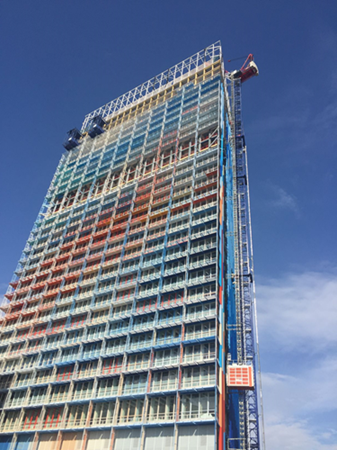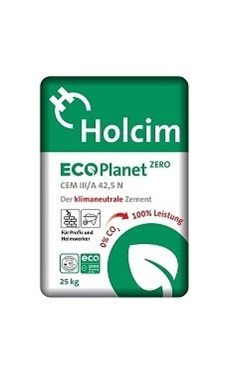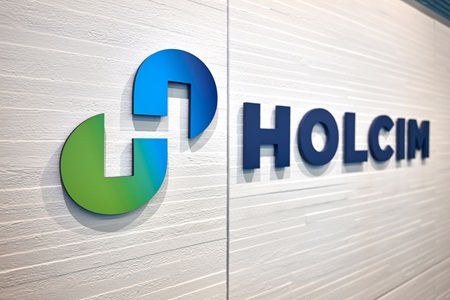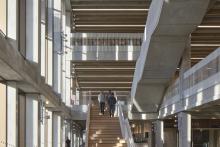The 2023-2029 period will see the green building materials market grow at a CAGR (compound annual growth rate) of 12.2%, says Arizton. The company notes that the market is undergoing significant growth, fuelled by various factors.
Increasingly, consumers and businesses prioritise environmental sustainability, thus boosting the demand for buildings with reduced environmental footprints. In response, governments around the globe are enacting stricter regulations and policies to promote energy efficiency and sustainable construction practices. Such factors create a substantial market for green building materials that adhere to these new standards.

Moreover, Arizton says green building materials offer long-term economic advantages by lowering energy consumption and reducing the operating costs of buildings. These materials also enhance indoor air quality, fostering a healthier environment for occupants. The green building materials market is seeing continuous innovation, with companies developing new and improved green building materials that offer better performance and functionality. Additionally, there is a growing emphasis on incorporating recycled content into building materials and creating products designed for easier deconstruction and recycling at the end of their lifecycle. This focus supports environmental goals and enhances green building materials' cost-effectiveness and overall appeal.
Among recent developments in the global green building materials market highlighted by Arizton are Holcim's 2023 launch of Europe's first calcined clay low-carbon cement operation and a global innovation hub to accelerate sustainable building. The immersive showroom at this hub showcases Holcim's efforts to decarbonise buildings across their lifecycle, featuring low-carbon materials like ECOPact concrete and ECOPlanet cement, roofing and insulation systems that enhance energy efficiency, such as Elevate boards and Airium. Circular construction solutions, including Holcim's proprietary ECOCycle circular technology platform, recycle construction demolition materials into new building solutions.
In 2020, Cemex introduced its first carbon-neutral concrete. The Vertua range of low CO₂ concrete products offers a reduction in carbon footprint from 30% to 70%, with the possibility of achieving carbon neutrality through offsets.

In 2023, Cemex unveiled a new range of bio-sourced admixtures designed for a reduced carbon footprint. These admixtures, made from natural, renewable, and locally sourced raw materials, can achieve a carbon footprint up to 70% lower than traditional oil-based admixtures.
In 2023, Kingspan's Insulation business launched the HemKor product range, which aims to reduce buildings' carbon footprints. Made largely from hemp, a fast-growing bio-based material, the range includes Jute Blend, Pure, and Padding.
To meet the demand for sustainable and innovative construction solutions, Stora Enso introduced Sylva by Stora Enso in 2022. Sylva is a massive wood building kit comprising pre-manufactured, custom-made applications delivered just in time to the building site.

Bio-based materials from renewable resources such as plants, agricultural waste, and recycled content are increasingly important in sustainable construction. These materials offer a way to mitigate the environmental impacts of building activities, including carbon emissions, resource depletion, and waste production. The European Commission forecasts steady growth in the use of bio-based materials across various industries. Biomass is gaining traction as a raw material in numerous applications, from industrial chemicals to construction materials. Buildings account for approximately 50% of resource extraction and consumption and over 30% of the EU's annual waste generation. Furthermore, buildings are responsible for 40% of the EU's energy consumption and 36% of energy-related greenhouse gas emissions. Early adopters of bio-based construction are leading the way in minimising the environmental footprint of buildings. These pioneering projects are anticipated to pave the way for the widespread acceptance and use of biomaterials in the construction industry.
Green building materials often come with higher initial costs than conventional alternatives, notes Arizton, posing a challenge for builders and developers in the green building materials market, particularly in budget-sensitive projects. However, technological advancements and economies of scale are gradually narrowing this cost gap. However, these materials typically require sustainable sourcing and advanced manufacturing techniques and are produced in lower volumes, contributing to higher upfront prices. For instance, recycled content materials like steel, concrete, and plastic lumber tend to be more expensive due to the specialised sorting and processing and sometimes lower availability compared to virgin materials. FSC-certified wood, which ensures responsible forestry practices, can also be pricier due to stricter quality control and limited sourcing depending on the type of wood.
Although adoption rates and regional dynamics differ significantly, the global green building materials market is experiencing notable growth. Arizton states North America leads the global green building materials market, propelled by established green building codes and certifications like LEED, increasing consumer demand for sustainability, and stringent energy efficiency regulations. This market emphasises high-performance insulation, energy-efficient windows, and low-VOC building products. Furthermore, the APAC region is projected to witness the fastest growth in the global green building materials market during the forecast period due to rapid urbanisation, a surge in construction activities, government initiatives promoting green construction, and rising environmental awareness in several countries.

Europe's green building materials industry is bolstered by strict environmental regulations and ambitious sustainability goals, making it a major player in developing and using bio-based materials such as wood and cellulose insulation. Further, the Middle East & Africa, and Latin America are in the early stages of green building materials market development. However, growth is anticipated due to increasing government support for sustainable construction, heightened climate change concerns, and the rising demand for energy-efficient buildings. However, certain green building materials may be limited in some countries, and high initial costs and limited awareness of green building materials present challenges.
Arizton reports that the global green building materials market is characterised by high fragmentation, with numerous local and international players vying for market share. The key players in the global green building materials market include Alumasc Group, BASF, Cemex, Holcim, Kingspan, and Stora Enso. The market is a dynamic and expanding sector featuring a blend of established companies and emerging innovators. Some of the leading manufacturers include CertainTeed, known for energy-efficient windows, insulation, and low-VOC building products; Kingspan, specialising in insulated panels and high-performance building envelopes; Holcim, offering low-carbon concrete and recycled content aggregates; and BASF, which develops energy-efficient insulation, high-performance coatings, and other sustainable materials.

Arizton notes that companies continuously develop new green building materials with improved environmental performance and functionality. Certifications such as LEED (Leadership in Energy and Environmental Design) and green building codes significantly influence product selection as companies strive to highlight the sustainability benefits of their materials. Although green materials often provide long-term benefits like reduced energy costs, their initial expenses can be higher than traditional alternatives. Companies are improving cost efficiency to make green building materials more accessible. Further, many international players are expected to expand worldwide during the forecast period, especially in the fast-developing countries in APAC and Latin America.
For more information about the global building materials market and to enquire about purchasing Arizton's full report: Green Building Materials Market – Global Outlook & Forecast 2024-2029, visit: https://www.arizton.com/market-reports/green-building-materials-market










